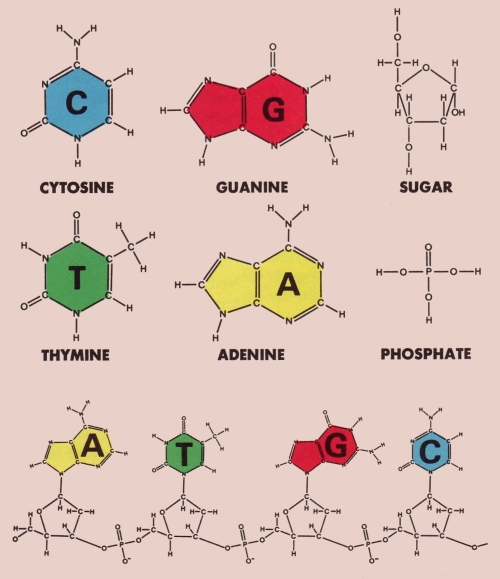NO EVOLUTION HERE
SCIENTISTS are still in a state of shock after having discovered the basic blueprint of life.
They call it DNA — short for the almost unpronounceable word deoxyribonucleic acid. DNA is a genetic code, like a master computer or file. It is in the nucleus of every living cell. Its programmed instructions, for example, make a cow reproduce a calf, not some other kind of animal, or make a liver cell reproduce a liver cell and not a heart cell.

Pacific Science Foundation Photo
|
This genetic recipe is so complex that the entire DNA system within a human contains as much information as several encyclopedia sets, or one hundred large dictionaries.
DNA — with incredible accuracy — will direct the reproduction of a colt from a horse. It will split any living cell into exact twins. This DNA could be likened to a master stencil grinding out endless copies of itself.
But — and here is the phenomenal KEY that allows mind-defying variety within a set kind. When a new life is engendered — two DNA codes or stencils are used — one each contained in the father's and mother's chromosomes. DNA reproduces a limitless amount of variety, all molded by a similar template. This variety, though extraordinary in scope, is limited by the fact that parents are of a similar kind.
As a result, variety within a species can reach astronomical proportions. (For example, note the number of varieties among moths and butterflies) But, because DNA reproduces itself exactly, kind reproduces kind. Evolution cannot occur!
BUILDING BLOCKS OF DNA (Deoxyribonucleic acid)
DNA is composed of an ingeniously simple alphabet, consisting of four chemical units — bound together by two others. These four chemicals — adenine (A), guanine (G), cytosine (C), and thymine (T) are strung out along a DNA strand. These four are nucleic acids. They are tied to deoxyribose sugars (hence, the term deoxyribonucleic acids). The sugars are tied together by phosphate molecules, to form the strand. See illustration below which shows four base steps chemically arranged on one strand. Human DNA can contain billions of such steps. Two complementary strands hook together and form a giant spiral ladder twisted into a double helix.

|
|
DNA UNZIPS ITSELF
DNA molecule unwinds and begins to split. The miracle of kind reproducing kind has begun! Each of the four-card symbols represents the four nucleic acids, G, C, A, T. Note that adenine-thymine and guanine-cytosine are always found together.
NEXT, COPIES ITSELF
The nucleic acid bases along both strands pick up complementary nucleotides floating freely in the cell nucleus. Linked by sugars and phosphates, the newly formed strands of DNA join and begin to retwist into a double helix.
THEN, DOUBLES ITSELF
When the entire cell DNA (which means the entire chromosome) has been duplicated, the job is finished. There are now two cells and each is an exact twin of the other.
|